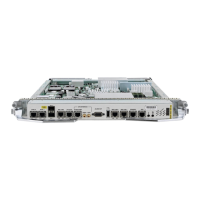Configuring Hierarchical Modular QoS on Cisco ASR 9000 Series Routers
Contents
QC-124
Cisco ASR 9000 Series Aggregation Services Router Modular Quality of Service Configuration Guide
OL-23108-02
Contents
• Information About Hierarchical QoS, page 124
• How to Configure Hierarchical QoS, page 131
• Configuration Examples for Hierarchical QoS, page 143
• Verifying the Configuration of Hierarchical Policies, page 151
• Additional References, page 152
Information About Hierarchical QoS
Hierarchical QoS allows you to specify QoS behavior at multiple policy levels, which provides a high
degree of granularity in traffic management. A hierarchical policy is a QoS model that enables you to
specify QoS behavior at multiple levels of hierarchy. You can use hierarchical policies to:
• Allow a parent class to shape multiple queues in a child policy
• Apply specific policy map actions on the aggregate traffic
• Apply class-specific policy map actions
• Restrict the maximum bandwidth of a virtual circuit (VC) while allowing policing and marking of
traffic classes within the VC
The service-policy command is used to apply a policy to another policy, and a policy to an interface,
subinterface, VC, or VLAN.
For example, in a three-level hierarchical policy, use the service-policy command to apply:
• Bottom-level policy to a middle-level policy
• Middle-level policy to a top-level policy
• Top-level policy to an interface, subinterface, VC, or VLAN
Benefits of Hierarchical Policies
Depending on the type of hierarchical QoS policy you configure, you can:
• Shape multiple queues to a single rate
• Divide a single class of traffic into one or more subclasses
• Specify the maximum transmission rate of a set of traffic classes that are queued separately, which
is essential for virtual interfaces such as Frame Relay PVCs and IEEE 802.1Q virtual VLANs
• Configure minimum bandwidth queues on virtual circuits
• Shape the aggregate traffic of queues on a physical interface (for example, provide a 10-megabits
per second (Mbps) service on a 100-Mbps physical interface)
• Restrict the maximum bandwidth of a VC while allowing policing and marking of classes within the
VC

